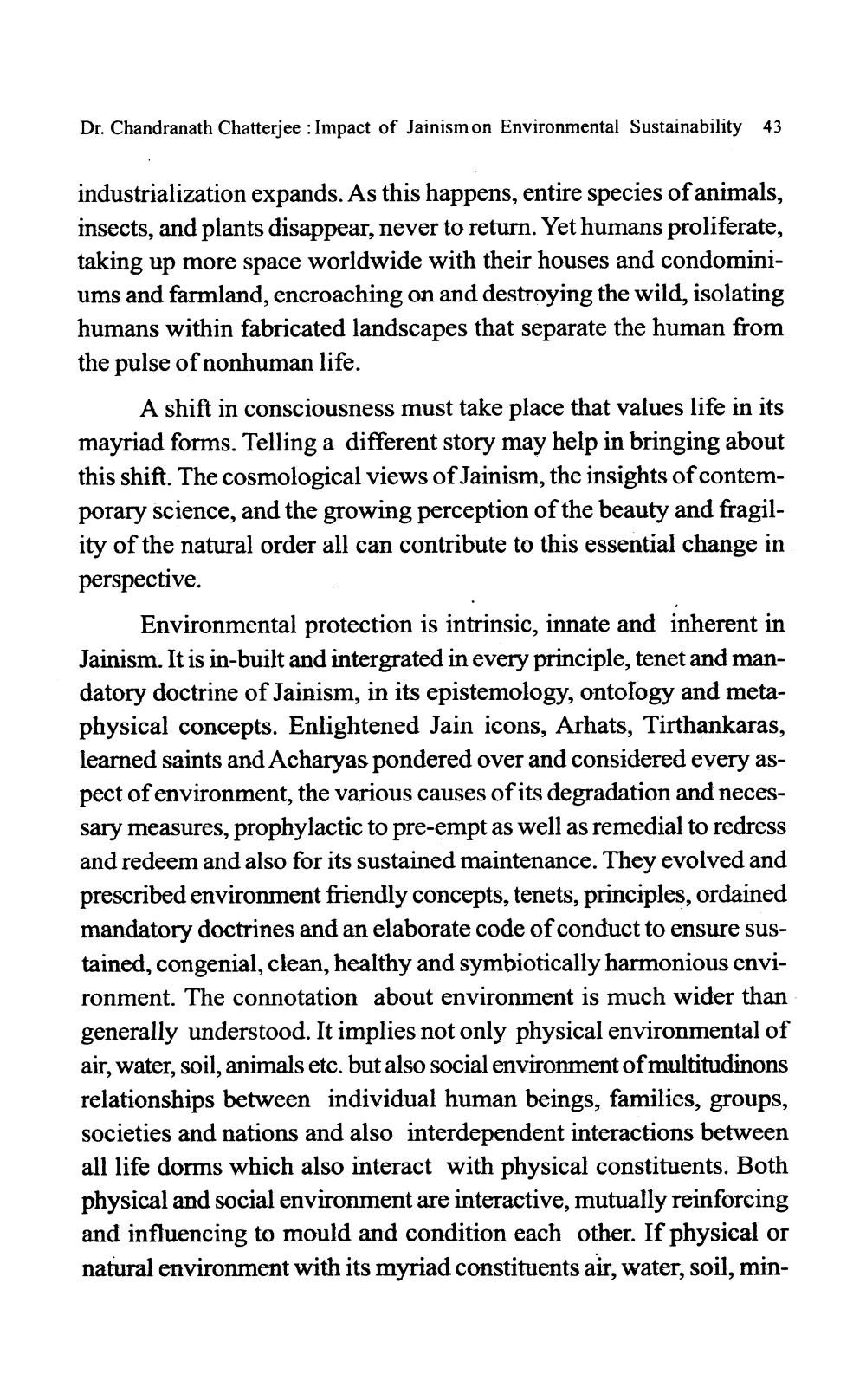________________
Dr. Chandranath Chatterjee : Impact of Jainism on Environmental Sustainability
43
industrialization expands. As this happens, entire species of animals, insects, and plants disappear, never to return. Yet humans proliferate, taking up more space worldwide with their houses and condominiums and farmland, encroaching on and destroying the wild, isolating humans within fabricated landscapes that separate the human from the pulse of nonhuman life.
A shift in consciousness must take place that values life in its mayriad forms. Telling a different story may help in bringing about this shift. The cosmological views of Jainism, the insights of contemporary science, and the growing perception of the beauty and fragility of the natural order all can contribute to this essential change in perspective.
Environmental protection is intrinsic, innate and inherent in Jainism. It is in-built and intergrated in every principle, tenet and mandatory doctrine of Jainism, in its epistemology, ontology and metaphysical concepts. Enlightened Jain icons, Arhats, Tirthankaras, learned saints and Acharyas pondered over and considered every aspect of environment, the various causes of its degradation and necessary measures, prophylactic to pre-empt as well as remedial to redress and redeem and also for its sustained maintenance. They evolved and prescribed environment friendly concepts, tenets, principles, ordained mandatory doctrines and an elaborate code of conduct to ensure sustained, congenial, clean, healthy and symbiotically harmonious environment. The connotation about environment is much wider than generally understood. It implies not only physical environmental of air, water, soil, animals etc. but also social environment of multitudinons relationships between individual human beings, families, groups, societies and nations and also interdependent interactions between all life dorms which also interact with physical constituents. Both physical and social environment are interactive, mutually reinforcing and influencing to mould and condition each other. If physical or natural environment with its myriad constituents air, water, soil, min




